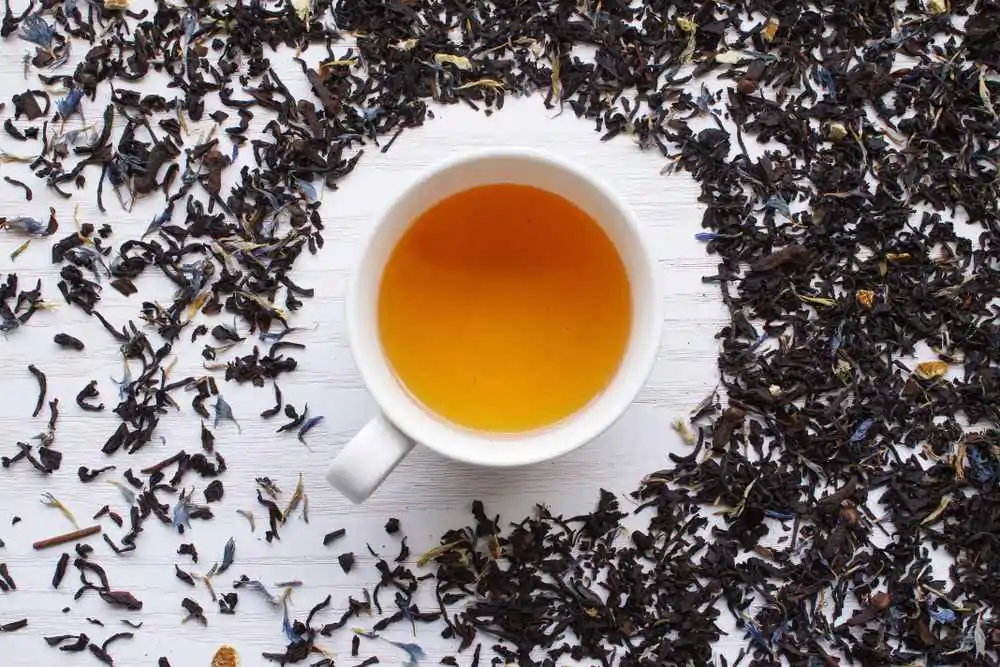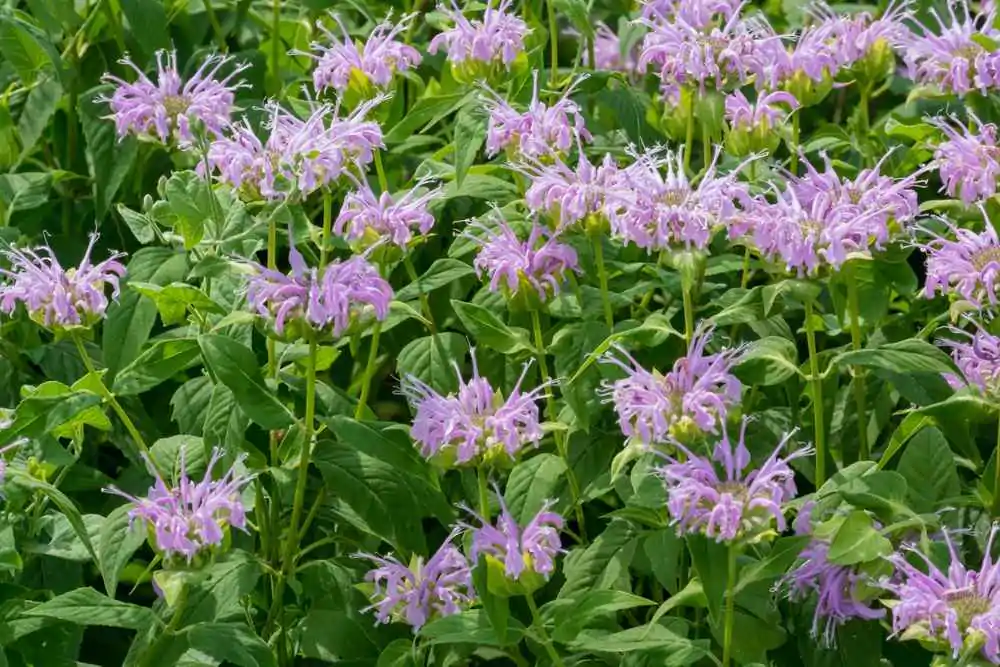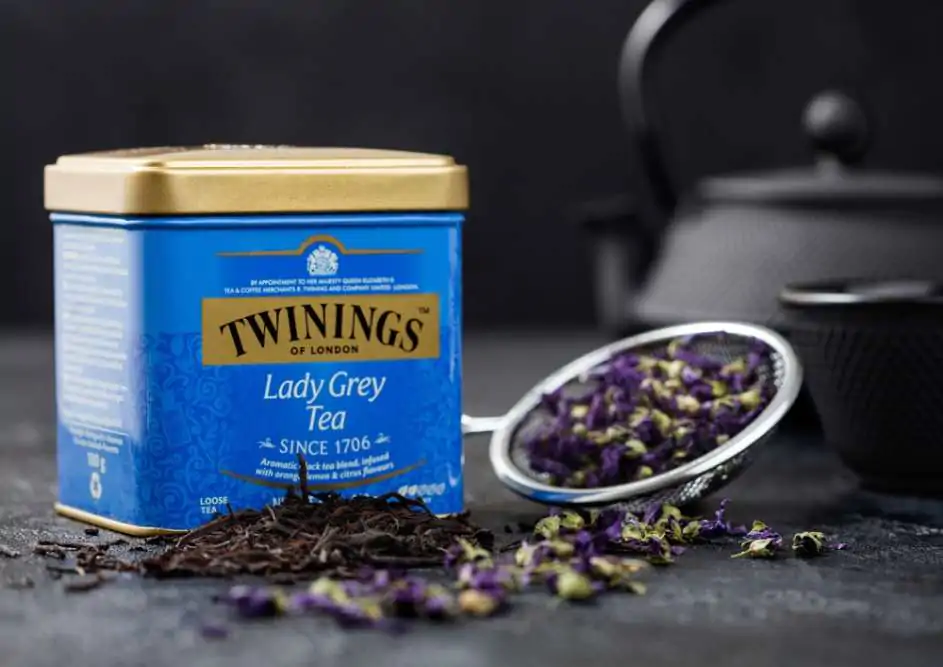If you like black tea, then Earl Grey may be right up your alley. In this article, we’ll share a delicious Earl Grey herbal tea recipe you can try at home.

If you love to try fun new teas, you’ll love our Earl Grey herbal tea recipe; Earl Grey is a popular British tea with a black tea base. Around 18% of tea drinkers in the U.K. enjoy this brew. It’s known for its full body and rich flavor profile with prominent citrusy notes.
Since it’s made from black tea, one could argue that Earl Grey is a true tea rather than herbal tea. While this is true, it’s the presence of bergamot oil that changes things, and you could argue that it is herbal tea or at least a blend. Wherever you stand, we decided to share an Earl Grey herbal tea recipe so you can enjoy this cozy beverage at home.
For those who find it plain tasting, we have compiled some variations to try. While you’re here, check out our article on the best Earl Grey tea brands for recommendations. Now, let’s dive in.
What Is Earl Grey Herbal Tea?
As mentioned earlier, Earl Grey is a black tea flavored with bergamot oil. Earl Grey tea was named after a noble British Prime Minister from 1830 to 1834, Charles Grey. Why exactly was it named after him, we can’t say for sure, as there are many stories on the matter – none of which are confirmed.

It’s also worth noting that bergamot, in this case, refers to bergamot fruit, which is a citrus fruit native to Northern Italy, known as Citrus bergamia. Bergamot is believed to be a hybrid of lemon and bitter orange, which is exactly how it tastes and smells.
I’m pointing this out because there’s another plant popularly known as bergamot – a wildflower Monarda fistulosa. This wildflower belongs to the sage family, meaning it has more in common with family members like mint, basil, and lavender than the bergamot fruit it commonly shares a name with.
Since it’s made of citrus, bergamot oil adds a distinctive lemony citrus note to the tea. This profile pairs well with the deep, intense flavors associated with black tea.
You will occasionally come across Earl Grey with dried blue cornflower petals. The petals don’t add much to the flavor, but make the drink more visually appealing. They may also provide some potential health benefits.
How To Make Earl Grey Herbal Tea
Classic Earl Grey Tea Recipe
Equipment
- Jar
- Kettle
- Mug
- Tea strainer
Ingredients
- 1/2 cup loose-leaf black tea
- Food-grade bergamot oil
- 8 oz cold water
- Sweetener (optional)
- Milk (optional)
Instructions
- Add a few drops of food-grade bergamot oil to a small jar, and swirl it around to coat the inside. Start small, with up to six drops. You can add more later if you find it too weak.
- Add loose-leaf black tea to the jar, screw the cap on, and shake it.
- Let the blend sit for at least 24 hours away from direct sunlight to ensure the leaves absorb the flavors.
- When you’re ready to brew, heat your cold water in the kettle to between 200-212°F.
- Add the tea leaves to a reusable tea strainer and put it in a mug, then pour in the hot water.
- Let it steep for about three to five minutes.
- Serve and enjoy!
Blue Cornflower Earl Grey Herbal Tea Recipe
Equipment
- Jar
- Kettle
- Mug
- Reusable tea strainer
Ingredients
- 1/2 cup loose-leaf black tea
- 2 tbsps. dried blue cornflower petals
- Food-grade bergamot oil
- 8 oz cold water
- Sweetener (optional)
- Milk (optional)
Instructions
- Add a few drops of food-grade bergamot oil to a small jar, then swirl the drops around to coat the inside. Start small, with around five to six drops of oil, to ensure you don’t end up with a blend that’s too strong for you. You can easily add more later if desired.
- Add loose-leaf black tea to the jar, place the cap on, and shake it. This way, the leaves should get evenly coated with bergamot oil.
- Take the lid off, add the dried blue cornflower petals, then shake again.
- Let the blend sit for at least 24 hours in a closed jar away from direct sunlight.
- When you’re ready to brew, heat cold water in the kettle to no more than 212°F (around 208°F is the sweet spot).
- Put the tea leaves into a reusable tea strainer and place it in a teacup, then pour in the hot water. Let it steep for about three to five minutes.
- Remove the strainer and serve.
Brewing Tips
Earl Grey herbal tea can be good or excellent – depending on how you brew it. We’ve compiled some tips to allow you to make the most of this brew.
First, you might have noticed that the recipe asks for cold water, even though it will be warmed up later. The hot water from your tap might have picked up some of the minerals that accumulate in your boiler, which can negatively affect the taste of your brew. You want the water to be fresh and full of oxygen, which helps develop the flavor.
Plus, tap water rarely, if ever, gets hot enough to brew this kind of tea, which ideally requires a temperature of 200-212°F. Like coffee, tea is delicate and requires the right temperature to extract flavor compounds.
Since black tea is the most oxidized or processed of all the tea types, it asks for a higher temperature than its counterparts. Still, the numbers are never above boiling point, as that would burn and scald the tea.
Steeping is, more or less, a personal preference. Typically, black teas should be steeped for three to five minutes. Keep in mind that the longer you do it, the more caffeinated your brew becomes.
Prewarming your cup with hot water is critical to achieve consistent infusion. When you pour hot water into a cold cup or pot, it immediately starts to cool down below the necessary temperature for brewing black tea. As a result, you’ll get an unevenly extracted brew.
Earl Grey Variations
Earl Grey is so beloved worldwide that, nowadays, the variations are just as good as the original blend. If you feel like there’s something “missing” in the original blend recipe, here are some other options for you to try.
Lady Grey

As you might have guessed, this blend is named after Earl Grey’s wife, Mary Elizabeth Grey. Interestingly, this blend is a trademarked variation created in the 1990s by the popular tea company Twinings.
While the world was going nuts about Earl Grey, the Northern European markets didn’t share the enthusiasm. The strong flavor profile was too much for Nordic palates, so the tea didn’t sell well. In response, the brand came up with a subtler version, which contains lemon and orange peel for a more fruity and less herbal flavor.
Russian Earl Grey
When standard Earl Grey tea first arrived in Russia, it wasn’t very well received. People were used to drinking more fruity and herbal beverages, while tea was too bitter for their taste.
While the origin of this Earl Grey variation isn’t exactly known, we can assume it was made with the same purpose as Lady Grey tea – to appeal to those who love mellower drinks. That’s exactly what Russian Earl Grey is: black tea with bergamot, orange peel, lemongrass, and blue cornflowers. It’s sweet, with citrusy overtones and malty undertones.
French Earl Grey
If you prefer floral teas, French Earl Grey might be right up your alley. This variation is made by adding rose petals to the blend, which bring out the vibrant and sweet taste and a delicate aroma. Other flowers can be included in the mixture, such as jasmine and hibiscus, to emphasize the floral flavor profile further.
Earl Grey Crème
Earl Grey Crème may be the fanciest variation on the list. Aside from black tea leaves and bergamot oil, this blend contains orange peel, cornflower, and vanilla. Sometimes, it may also include natural crème flavoring.
The addition of vanilla makes the tea sweet and silky, with slight floral and citrusy notes. It’s an excellent base for London Fog, a beverage made with Earl Grey, steamed milk, and vanilla syrup. If you want to know more, check out our article on what is a London Fog tea.
Rooibos Earl Grey
If, for whatever reason, you want to switch tea for an herbal infusion, that doesn’t mean you have to give up on drinking Earl Grey. Rooibos Earl Grey is simply rooibos tea with bergamot oil. While not exactly the same thing, this rooibos variation is sweet and nutty, without the bitterness of black tea.

